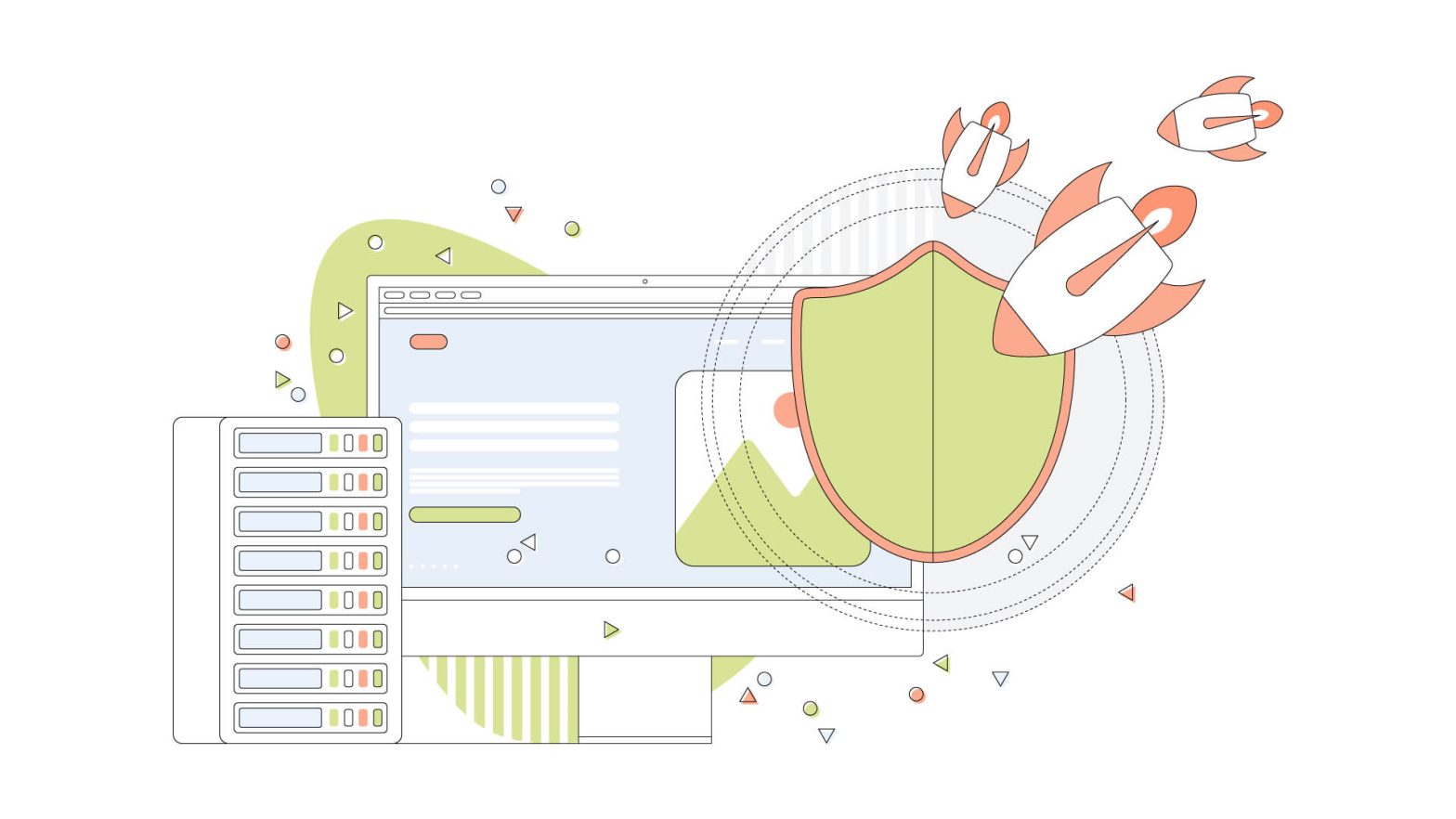In the ever-evolving landscape of cyber attacks, cybersecurity teams must constantly adapt to ensure the defences of the organizations they protect are fit for purpose.
This year, there was a significant rise in distributed denial-of-service (DDoS) attacks worldwide. Some reports say over 7.9m happened during the first six months, requiring website owners to maintain the utmost vigilance.
This article aims to guide small and medium-sized businesses on strategies and technologies to safeguard against disruptive threats and ensure robust online security.

What Are DDoS Attacks?
Distributed denial-of-service (DDoS) attacks are online cyber threats that involve maliciously attacking a network, web server, or web service to disrupt traffic flow.
This is achieved by overwhelming the network with a large volume of requests; essentially flooding the system to the point that it can no longer handle web traffic, and sending it offline.
DDoS attacks are effective as they compromise multiple computer systems and devices, opening the door to malware to create an extensive BotNet network. This network can then be used as a traffic source, significantly increasing the requests sent to a target system.
The use of BotNets also makes it extremely difficult to separate legitimate traffic from the attack traffic, as mostly residential IPs are being used in both cases.
How to Confirm a DDoS Attack
The first indication of a DDoS attack is if a network or web service suddenly becomes very slow or unavailable; however, a legitimate spike in traffic can also cause this. To confirm an attack, there are analytical tools that can be used to help investigate further.
Typical signs to look out for include:
- Large amounts of traffic from a single IP address or IP range
- Unusual traffic from the same device type, browser version, or device location
- A spike in requests to a specific page or endpoint
- A significant increase in traffic during an unusual hour of the day
- Suspicious traffic patterns, such as spikes every 5 or 10 minutes
How to Defend Against DDoS Attacks
When defending against a DDoS attack, the key challenge is the differentiation between regular traffic and that generated by a threat actor. Traffic spikes can occur during the release of a new product on an eCommerce website, for example, disrupting the service.
Let’s consider some ways cybercriminals attempt to disguise malicious traffic to understand better how DDoS attacks can be defended against.
DDoS traffic can take many forms, from multi-vector attacks that adapt to the target to less sophisticated, unspoofed single-source attacks. Multi-vector DDoS attacks use various sources and methods to exhaust the target’s resources, making it very challenging to identify malicious traffic.
For example, this type of attack could simultaneously target several layers of the network, combining attack methods such as an HTTP flood and DNS amplification.
To defend against this, multiple strategies must be deployed that protect all network layers without limiting traffic flow.
DDoS Protection: 5 Solutions for This Year
Understanding the challenges is the first step in forming an effective DDoS strategy, but to mitigate against the threat, technology and advanced techniques are required to form a layered solution.

Web Application Firewalls
A Web Application Firewall (WAF) can prevent application (layer 7) DDoS attacks by verifying all requests sent from the internet to the network server. In this case, a WAF is a reverse proxy, stopping any malicious traffic before a server request can be sent.
Web Application Firewalls filter requests based on a rules system that identifies the tools and techniques used in a DDoS attack. Custom rules can be created easily, and should an attack occur; they can be implemented quickly to stop the threat in its tracks.
Blackhole Routing
An easily accessible solution for network administrators is to create a black hole route that funnels web traffic. Blackhole routing sends all traffic (both malicious and legitimate) to a ‘dead end’ and then drops it from the network.
This method doesn’t implement specific restrictions or rules and is not a permanent form of protection. Instead, blackhole routing is deployed when a DDoS attack is already occurring. Unfortunately, this also means the attacker has achieved their goal of making a service inaccessible, but at least a certain level of control is maintained.
Rate Limiting
Another method of defending against DDoS attacks is to limit the number of requests a server can accept over a specific period of time. This is known as rate limiting.
This technique is often used to prevent brute force attacks and to stop web scrapers from stealing content, but for DDoS attacks, it needs to work in unison with other strategies to prove useful. For example, rate limiting must have an algorithm that judges which traffic is legitimate and which is fraudulent. As such, rate limiting should be considered merely a component of a wider DDoS defence strategy.
Operational Frameworks
In a digital era where threats like DDoS attacks are continually evolving, future-proofing your business has never been more imperative. Embracing modern operational frameworks like GitOps can be a game-changer in this aspect.
GitOps is a set of practices that utilizes Git as a version control system, centralizing the source code and infrastructure configurations, thus enabling automated deployments and monitoring. This streamlined approach to deployment and management of infrastructure offers a clear audit trail and facilitates rapid recovery in the event of system anomalies.
The automated, consistent, and transparent nature of GitOps makes it a robust foundation for integrating advanced DDoS protection solutions.
Anycast Network Diffusion
Using an Anycast network, malicious traffic can be dispersed across distributed servers so it can be handled without disrupting a single server, network, or service. This method spreads the traffic across a wide network so the large volume of requests can be managed without causing downtime.
It should be noted that Anycast network diffusion is only as effective as the size of the network and the size of the attack. A small distributed network may not be able to handle the traffic created by a large-scale attack adequately.
Put Your Website Behind a CDN
One of the most widely used methods of securing a website is putting its traffic behind a CDN or load balancer. A reliable web hosting service will provide plenty of opportunities and info on how to do that on your web hosting account just by visiting its knowledge base. The same goes for load balancers.
To control the internet traffic that reaches your website, you can use a content delivery network and firewalls. However, it’s important to remember that each method has its advantages and disadvantages, so it’s best to use multiple strategies for optimal safety.

Conclusion
DDoS attacks are a growing concern in the world of cybersecurity, with differentiating legitimate traffic and malicious traffic often proving a significant challenge.
Employing analytical tools can aid in the detection of indicators of a DDoS attack, including the presence of an enormous volume of traffic emanating from a singular IP or location.
However, a comprehensive and multiangled defence strategy requires the combination of various techniques and a tailored approach to combat DDoS attacks on a situational basis.
Enjoyed this post? Head over to the HostPapa Blog to read more exciting topics like this one!




